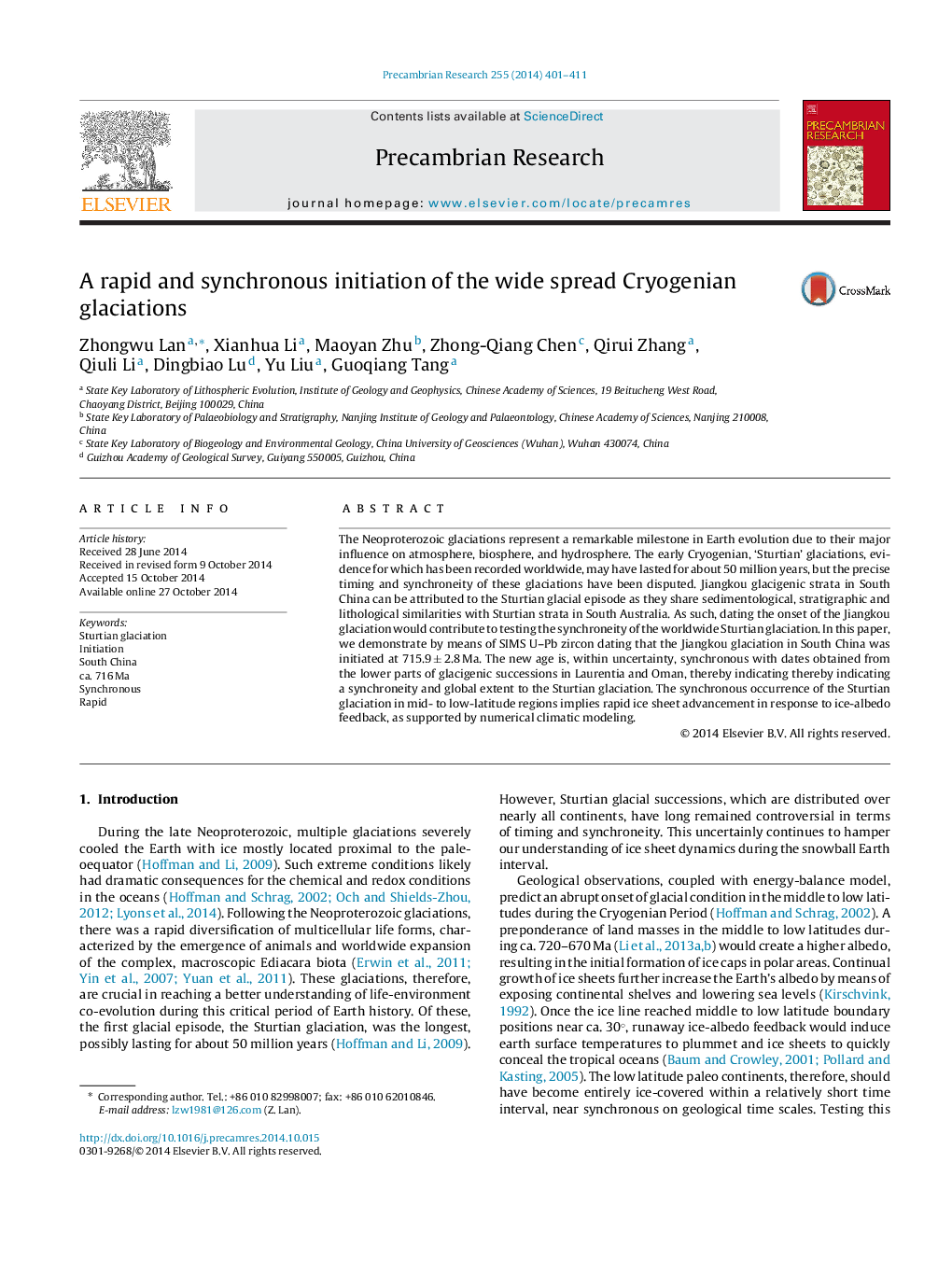| Article ID | Journal | Published Year | Pages | File Type |
|---|---|---|---|---|
| 4722796 | Precambrian Research | 2014 | 11 Pages |
•A ca. 716 Ma SIMS U–Pb zircon age was obtained from Gongdong Formation, South China.•The maximum initiation age of the Sturtian glaciation was constrained to be ca. 716 Ma.•The Sturtian glaciation occurred synchronously in three paleocontinents.•Ice advancement from low latitudes to paleoequator must have occurred suddenly.
The Neoproterozoic glaciations represent a remarkable milestone in Earth evolution due to their major influence on atmosphere, biosphere, and hydrosphere. The early Cryogenian, ‘Sturtian’ glaciations, evidence for which has been recorded worldwide, may have lasted for about 50 million years, but the precise timing and synchroneity of these glaciations have been disputed. Jiangkou glacigenic strata in South China can be attributed to the Sturtian glacial episode as they share sedimentological, stratigraphic and lithological similarities with Sturtian strata in South Australia. As such, dating the onset of the Jiangkou glaciation would contribute to testing the synchroneity of the worldwide Sturtian glaciation. In this paper, we demonstrate by means of SIMS U–Pb zircon dating that the Jiangkou glaciation in South China was initiated at 715.9 ± 2.8 Ma. The new age is, within uncertainty, synchronous with dates obtained from the lower parts of glacigenic successions in Laurentia and Oman, thereby indicating thereby indicating a synchroneity and global extent to the Sturtian glaciation. The synchronous occurrence of the Sturtian glaciation in mid- to low-latitude regions implies rapid ice sheet advancement in response to ice-albedo feedback, as supported by numerical climatic modeling.
